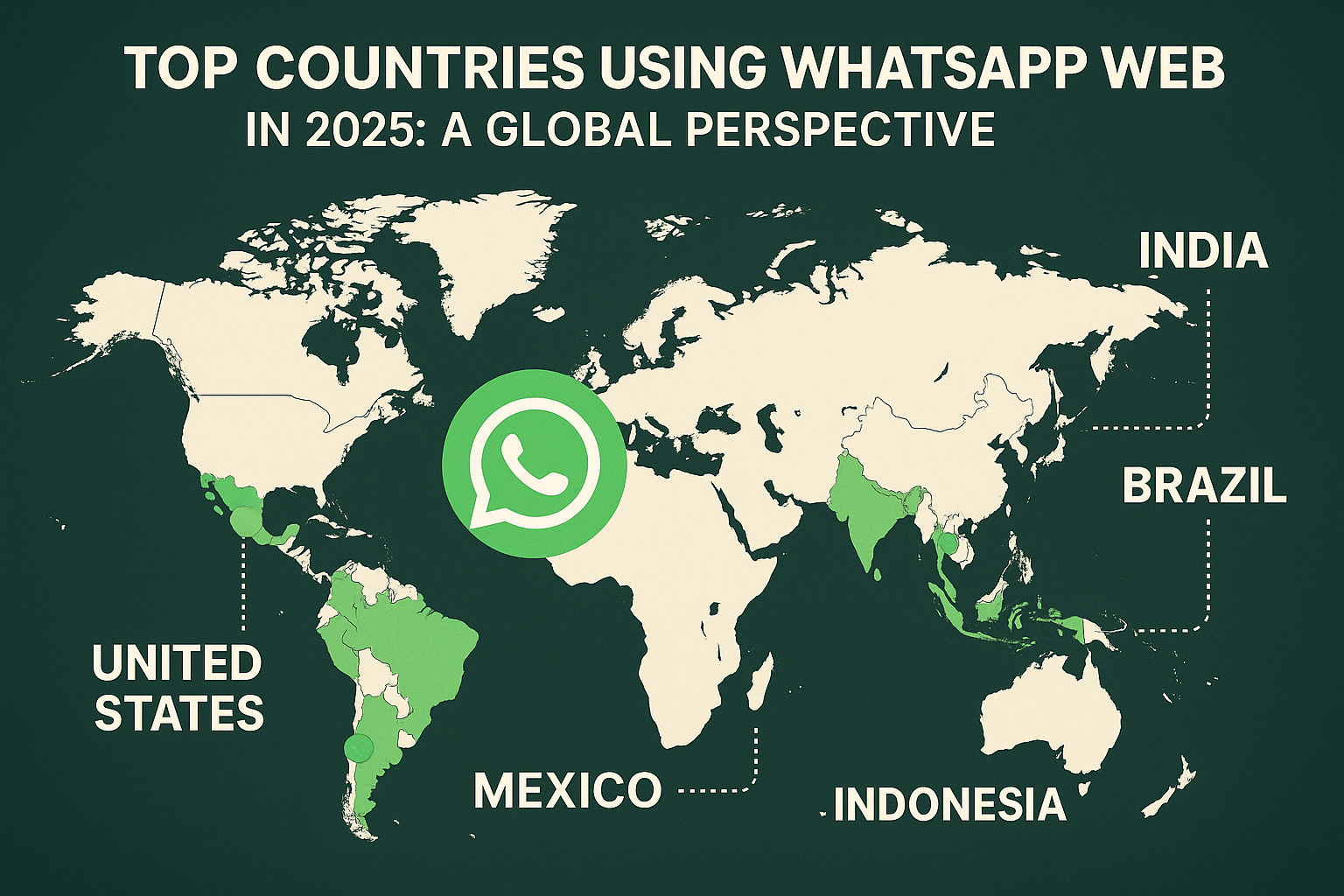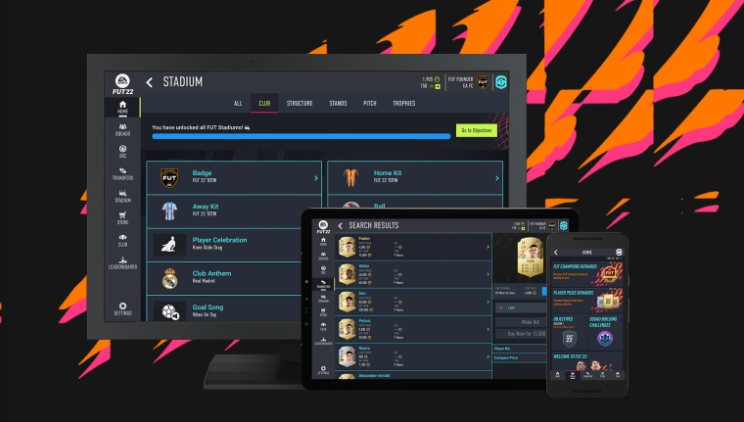In the rapidly evolving digital landscape of 2025, WhatsApp Web continues to solidify its position as a dominant messaging platform worldwide. With billions of active users, WhatsApp Web’s seamless integration with smartphones and its versatile functionalities have made it an indispensable tool for personal communication, business operations, and remote collaboration. This article explores the top countries leveraging WhatsApp Web in 2025, analyzing regional adoption trends, factors driving usage, and the implications for global digital communication.
The Rise of WhatsApp Web: An Overview
Launched in 2015, WhatsApp Web revolutionized the way users interact with their messaging application by enabling synchronized conversations across devices. Its evolution over the past decade has been marked by enhanced security features, user-friendly interface improvements, and integration with business tools, making it an essential component of digital communication strategies worldwide. Click here to direct Download WhatsApp web.

By 2025, WhatsApp Web boasts over 2 billion active users globally, with significant adoption rates in countries across Asia, Africa, Europe, and South America. The platform’s capacity to facilitate instant messaging, multimedia sharing, voice, and video calls on desktops and laptops has expanded its appeal across diverse demographic groups and professional sectors.
Top Countries Leading WhatsApp Web Usage in 2025
1. India: The Largest Digital Messaging Ecosystem
India remains the powerhouse of WhatsApp Web utilization in 2025, with over 500 million users actively engaging via desktops and laptops. Factors driving high adoption include:
- Large Population Base: India’s population exceeding 1.4 billion, with over 600 million internet users.
- Growth of Digital Economy: The surge in digital payments, e-commerce, and remote work has necessitated web-based messaging.
- Regional Language Support: Multilingual interface options cater to diverse linguistic communities.
- Business Integration: Small and medium enterprises (SMEs) leverage WhatsApp Web for customer engagement and order management.
Furthermore, government initiatives promoting digital literacy and mobile internet penetration have bolstered WhatsApp Web’s presence in urban and semi-urban areas.
2. Brazil: The Hub of Digital Social Networks
Brazil stands out as one of the most active countries using WhatsApp Web, with approximately 180 million users in 2025. The country’s vibrant social media culture, coupled with WhatsApp’s widespread popularity for communication, has driven:
- Social Networking: Connecting friends and family across geographical boundaries.
- Business Outreach: SMEs and local entrepreneurs utilize WhatsApp Web for marketing and customer support.
- Public Campaigns: Government and NGOs use the platform for awareness campaigns, especially during crises like health emergencies.
3. Indonesia: The Fast-Growing Southeast Asian Market
Indonesia’s digital ecosystem has seen exponential growth, with over 150 million active WhatsApp Web users. Key factors include:
- Mobile-First Culture: Preference for smartphones and desktops for communication needs.
- Expanding E-Commerce: Integration of WhatsApp Business tools with Web for transactional purposes.
- Remote Work Trends: Transition to hybrid work models accelerate desktop-based communication.
Government policies encouraging digital entrepreneurship have also fostered WhatsApp Web’s expansion as a business communication tool.
4. Nigeria: Pioneering Digital Innovation
Nigeria emerges as a significant player in WhatsApp Web adoption, with an estimated 80 million users. The country’s youthful demographic, rapid smartphone penetration, and expanding internet infrastructure contribute to its high usage rates. Noteworthy aspects include:
- Entrepreneurship and Startups: Small firms rely on WhatsApp Web for customer relations and marketing.
- Social Connectivity: Maintaining personal relationships amid urban migration.
- Educational Outreach: Remote learning initiatives utilize WhatsApp Web for disseminating educational content.
5. Mexico: The Latin American Digital Hub
Mexico’s digital landscape shows robust WhatsApp Web engagement, with around 100 million users, driven by:
- Family and Social Networks: Use of WhatsApp for daily communication.
- E-Government Services: Utilization of the platform for civic engagement.
- Business Adoption: Corporations and local businesses leveraging Web for customer service and sales.
Regional Trends and Insights
Africa: Emerging Markets and Growing Adoption
While overall penetration is lower than other regions, African countries like Kenya, South Africa, and Ghana are experiencing rapid growth in WhatsApp Web users. The surge is driven by increased mobile internet access, investments in digital infrastructure, and the burgeoning gig economy.
Europe: Advanced Digital Ecosystems
European countries such as Germany, France, and the UK display high WhatsApp Web usage, primarily among professionals, students, and digital natives. The emphasis on data security and GDPR compliance has shaped user preferences, leading to safer communication channels.
Asia-Pacific: Diverse Adoption Patterns
Apart from India and Indonesia, countries like the Philippines, Malaysia, and Sri Lanka are witnessing increased adoption. The integration of WhatsApp Web with business platforms and e-learning portals has amplified usage among students and entrepreneurs.
Factors Influencing WhatsApp Web Adoption in 2025
Several key factors have contributed to the widespread adoption of WhatsApp Web:
- Digital Transformation Initiatives: Governments and organizations promoting digital literacy.
- Remote Work and Hybrid Models: The pandemic-driven shift towards remote working arrangements.
- E-Commerce Integration: Seamless shopping and payment experiences through WhatsApp Business API.
- Security and Privacy Features: End-to-end encryption ensures user trust.
- Multilingual Support: Catering to diverse linguistic communities enhances accessibility.
Future Outlook and Potential Challenges
Despite the extensive adoption, WhatsApp Web faces challenges, including concerns over data privacy, regulatory scrutiny, and competition from other messaging platforms like Telegram and Signal. However, continuous improvements in security, scalability, and enterprise features are likely to sustain and grow its user base.
As 2025 progresses, the integration of artificial intelligence, chatbots, and analytics within WhatsApp Web is expected to further enhance user engagement and operational efficiency across sectors.
Conclusion
WhatsApp Web’s evolution in 2025 reflects a broader transition towards integrated, device-agnostic communication solutions. Countries like India, Brazil, Indonesia, Nigeria, and Mexico lead the charge, driven by demographic, technological, and economic factors. As the digital ecosystem continues to evolve, WhatsApp Web remains a vital tool shaping how individuals and businesses connect, collaborate, and thrive in an increasingly interconnected world.
Author:
Jabran Mustafa is an accomplished technology writer specializing in IT, SaaS, and software development. Launching his writing journey in 2022, he brings over three years of dedicated experience in delivering insightful, industry-leading content. Since 2024, he has been a key contributor to innovaesoft.com, where he consistently provides in-depth analysis and innovative perspectives. With a passion for demystifying complex tech concepts, Jabran’s work aims to empower professionals and catalyze digital transformation.





















One thought on “Top Countries Using WhatsApp Web in 2025: A Global Perspective”
Comments are closed.